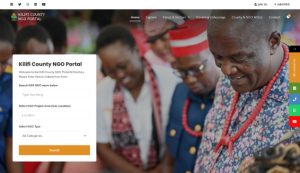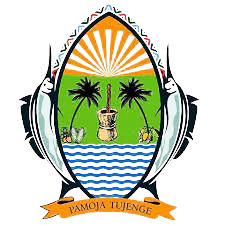The Disaster Management Division
The Disaster Management Division of Kilifi County is a crucial arm of the Department of Gender that is dedicated to safeguarding the lives, livelihoods, and property of residents by enhancing the county’s preparedness, response, and resilience to disasters. Recognizing the vulnerability of the region to various natural and human-induced hazards, the division plays a pivotal role in coordinating disaster risk reduction (DRR) strategies, emergency responses, and recovery efforts.
Disaster Risk Reduction (DRR) Initiatives
Preventing and minimizing the impact of disasters is at the core of the Disaster Management Division’s mandate. The division employs a proactive approach to disaster risk reduction through comprehensive planning, community engagement, and capacity building.
Community-Based Disaster Risk Management (CBDRM):
The division actively engages with local communities to develop and implement disaster risk management plans tailored to the specific risks faced by different areas. This includes training community members in early warning systems, evacuation procedures, and first aid. The division also collaborates with local leaders and institutions to enhance community resilience and ensure that disaster preparedness measures are culturally appropriate and effective.
Public Awareness Campaigns: Public awareness is a key component of disaster risk reduction. The division conducts regular awareness campaigns to educate residents about the potential risks in their areas, such as floods, droughts, and fires. These campaigns include workshops, distribution of educational materials, and the use of media platforms to disseminate vital information on disaster preparedness and response.
Infrastructure Resilience: In collaboration with other county departments, the Disaster Management Division works on strengthening the resilience of critical infrastructure. This involves conducting vulnerability assessments and implementing measures to protect schools, health facilities, roads, and water systems from the adverse effects of disasters.
Emergency Response and Coordination
When disasters strike, the ability to respond swiftly and effectively is critical. The Disaster Management Division coordinates emergency response efforts across the county, ensuring that resources are mobilized efficiently and that affected populations receive timely assistance.
Rapid Response Teams:
The division has established Rapid Response Teams (RRTs) that are trained and equipped to handle various types of emergencies, including floods, fires, and health crises. These teams work closely with local authorities, humanitarian organizations, and national agencies to provide immediate relief, such as food, water, shelter, and medical care to those affected by disasters.
Emergency Operations Center (EOC):
The division operates an Emergency Operations Center that serves as the command hub during disasters. The EOC coordinates communication, resource allocation, and decision-making, ensuring that all response activities are streamlined and effective. The center also maintains a database of resources, including equipment and personnel, to facilitate quick deployment during emergencies.
Partnerships and Collaboration:
Collaboration with stakeholders is key to an effective disaster response. The division partners with international organizations, NGOs, the private sector, and neighboring counties to enhance the capacity for disaster response. These partnerships help to pool resources, share expertise, and ensure a coordinated approach to disaster management.
Recovery and Rehabilitation
After the immediate response phase, the focus shifts to recovery and rehabilitation. The Disaster Management Division plays a leading role in helping communities rebuild and recover from the impacts of disasters.
Post-Disaster Needs Assessment (PDNA):
The division conducts thorough assessments to determine the extent of damage and the needs of affected communities. This information is used to guide recovery efforts, ensuring that they are targeted and effective. The PDNA process also informs long-term recovery planning, including the reconstruction of infrastructure and the restoration of livelihoods.
Livelihood Restoration Programs: Understanding that disasters can severely disrupt economic activities, the division implements livelihood restoration programs to help affected populations regain their sources of income. This includes providing agricultural inputs, vocational training, and financial support to rebuild small businesses. Special attention is given to vulnerable groups, such as women, children, and persons with disabilities, to ensure that they are not left behind in the recovery process.
Psychosocial Support: Disasters often have a profound psychological impact on survivors. The division offers psychosocial support services, including counseling and trauma care, to help individuals and communities cope with the aftermath of disasters. These services are provided in collaboration with health professionals and social workers, ensuring that the emotional and mental health needs of affected populations are addressed.
Climate Change Adaptation
The increasing frequency and intensity of climate-related disasters underscore the need for climate change adaptation measures. The Disaster Management Division integrates climate change considerations into its disaster risk management strategies to build resilience against future risks.
Climate-Smart Agriculture:
The division promotes climate-smart agricultural practices to help farmers adapt to changing weather patterns and reduce their vulnerability to climate-related disasters. This includes the introduction of drought-resistant crops, water conservation techniques, and sustainable land management practices.
Green Infrastructure:
As part of its efforts to mitigate the impacts of climate change, the division advocates for the development of green infrastructure, such as wetlands restoration, afforestation, and the creation of buffer zones along rivers and coastlines. These natural barriers help to absorb the shocks of extreme weather events and reduce the risk of flooding and erosion.
Climate Change Education:
The division works with schools and community groups to raise awareness about climate change and its impacts. Educational programs focus on building a culture of sustainability and encouraging behavior change that supports environmental conservation and disaster risk reduction.
Strategic Goals and Future Outlook
The Disaster Management Division is committed to enhancing the safety and resilience of Kilifi County through continuous improvement of its disaster management capabilities. The division’s strategic goals include:
Strengthening Early Warning Systems:
Investing in advanced technologies and systems to improve early warning capabilities, enabling timely alerts and proactive measures to prevent disaster impacts.
Enhancing Community Resilience:
Expanding community-based disaster risk management programs to reach more areas and ensure that every community in Kilifi County is prepared and resilient.
Building Capacity:
Providing ongoing training and capacity-building opportunities for disaster management personnel and community volunteers to enhance their skills and readiness.
Promoting Sustainable Development:
Ensuring that all disaster management activities are aligned with sustainable development principles, minimizing environmental impact and supporting long-term resilience.
Through its dedicated efforts, the Disaster Management Division continues to protect the people of Kilifi County, fostering a safer, more resilient community that can withstand the challenges posed by disasters and climate change.








